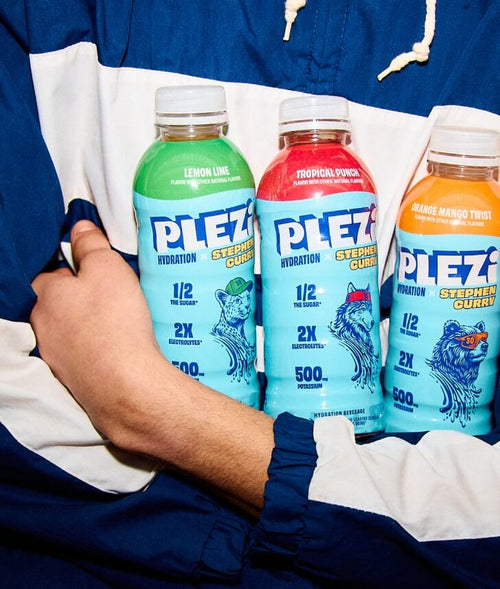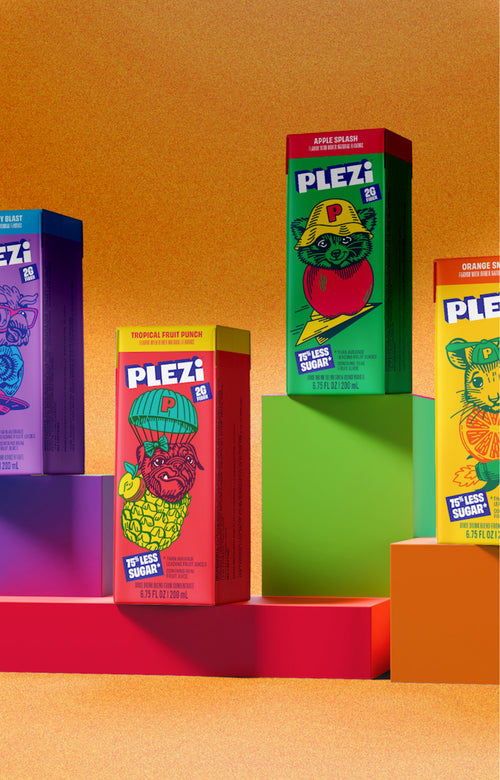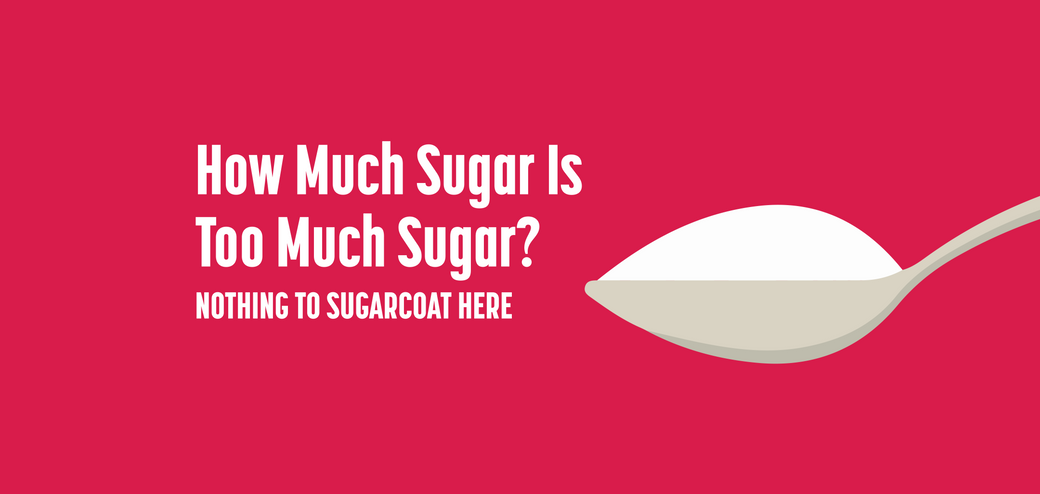There’s a lot of talk about sugar, and as parents, we try to be mindful of how much sugar our kids consume, but what do we really need to know about it?
Let’s break it down.
What are the different types of sugar?
It’s important to understand the type of sugar in the foods and beverages we choose - whether it’s naturally occurring or added during processing.
- Naturally occurring sugars can be found naturally in fruits, vegetables, and milk.
- Added sugars are added to food and drinks during processing or preparation, and can include things like sugar, brown sugar, sucrose, and high-fructose corn syrup. Added sugars don’t provide nutritional value. This is why the term “empty calories” is used to describe sugary beverages, treats, and products that only provide the body with calories. Our bodies break these sugars down faster thus the craving for more and need to eat more in order to feel full.
How can I tell how much sugar is in a product?
You can find the amount of sugar in packaged foods on the Nutrition Facts label. You’ll see a line for total sugars, and underneath that, a line for added sugars. If there are added sugars, that amount will be included within the total sugars as well. The percent Daily Value of added sugars helps to quickly see how the added sugar in the product makes up the total amount of recommended added sugars per day (based on a 2,000 calorie diet - more on that below).
How much sugar is ok for kids to consume in a day?
The Dietary Guidelines for Americans recommend keeping consumption of added sugars to less than 10% of total daily calories. You can find daily calorie ranges by age and gender at the end of this article. While this is the current recommendation, individual daily calorie and nutrient needs should be discussed with your kid’s pediatrician, as it depends on physical activity, personal health, and other environmental factors.
So if your kids should be eating about 1,500 calories per day, 10% of calories would mean eating no more than 150 calories, or 38 grams, of added sugar per day.
On average, kids between the ages of 2 - 19 consume about 66 grams of added sugar per day, which adds up to 53 pounds per year!
The main sources of added sugars for kids are sugary drinks, like soda, sports drinks, and fruit drinks with added sugar, and nearly two-thirds of kids consume sugary drinks on a given day.
Consuming too much added sugar can negatively impact kids’ health - it can increase the risk of heart disease, high blood pressure, type 2 diabetes, and cavities. Limiting sugar consumption is also important so that kids don’t develop a strong preference for sweet foods early on, which can lead them to be less interested in healthier foods and drinks. Research shows developing a craving for sweetness at a young age will only become harder to change as kids get older.
How can I limit my kids’ sugar intake?
- Check out the Nutrition Facts labels of the products you’re buying to see how much added sugar they include.
- Aim for water as your kids’ primary beverage - check out some of our tips to help with that!
- Add fruit to provide a little sweetness and flavor to foods like oatmeal or cereal (and look for versions of those that are low in sugar).
We don’t intend to make it sound easy - it’s not. We know kids will want treats, and that’s ok! But aiming for overall healthy eating habits while kids are young can help support their health and development into the future. And we’re here to help - we’ve worked hard on our products to reduce sugar levels and add in nutrients while also making sure we’ve got a taste kids love that isn’t too sweet, all with the aim to replace sugary drinks.
Estimated Calorie Needs per Day (by Age, Gender, and Physical Activity Level, Ages 2-19)
The Dietary Guidelines for Americans recommend keeping consumption of added sugars to less than 10% of total daily calories.
BOYS
|
Age |
Not Active |
Somewhat Active |
Active |
|
2 |
1000 calories |
1000 calories |
1000 calories |
|
3 |
1000 calories |
1400 calories |
1400 calories |
|
4-5 |
1200 calories |
1400 calories |
1600 calories |
|
6-7 |
1400 calories |
1600 calories |
1800 calories |
|
8 |
1400 calories |
1600 calories |
2000 calories |
|
9 |
1600 calories |
1800 calories |
2000 calories |
|
10 |
1600 calories |
1800 calories |
2200 calories |
|
11 |
1800 calories |
2000 calories |
2200 calories |
|
12 |
1800 calories |
2200 calories |
2400 calories |
|
13 |
2000 calories |
2200 calories |
2600 calories |
|
14 |
2000 calories |
2400 calories |
2800 calories |
|
15 |
2200 calories |
2600 calories |
3000 calories |
|
16-18 |
2400 calories |
2800 calories |
3200 calories |
|
19 |
2600 calories |
2800 calories |
3000 calories |
GIRLS
|
Age |
Not Active |
Somewhat Active |
Active |
|
2 |
1000 calories |
1000 calories |
1000 calories |
|
3 |
1000 calories |
1200 calories |
1400 calories |
|
4 |
1200 calories |
1400 calories |
1400 calories |
|
5-6 |
1200 calories |
1400 calories |
1600 calories |
|
7 |
1200 calories |
1600 calories |
1800 calories |
|
8-9 |
1400 calories |
1600 calories |
1800 calories |
|
10 |
1400 calories |
1800 calories |
2000 calories |
|
11 |
1600 calories |
1800 calories |
2000 calories |
|
12-13 |
1600 calories |
2000 calories |
2200 calories |
|
14-18 |
1800 calories |
2000 calories |
2400 calories |
|
19 |
2000 calories |
2200 calories |
2400 calories |
Sources:
- American Academy of Pediatrics. Public Policies to Reduce Sugary Drink Consumption in Children and Adolescents
- American Heart Association. Sugar 101
- American Heart Association. Added Sugars
- American Heart Association. How much sugar is too much?
- Centers for Disease Control and Prevention. Get the Facts: Added Sugars
- Centers for Disease Control and Prevention: Get the Facts: Sugar-Sweetened Beverages and Consumption
- Dietary Guidelines for Americans, 2020-2025








